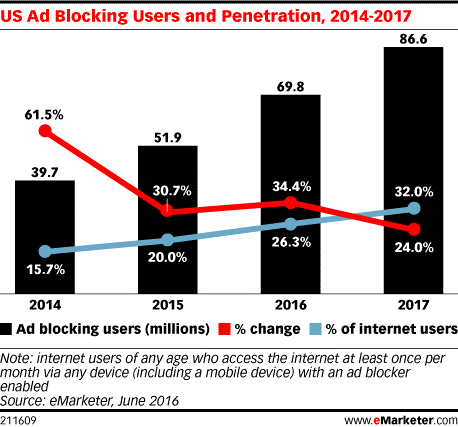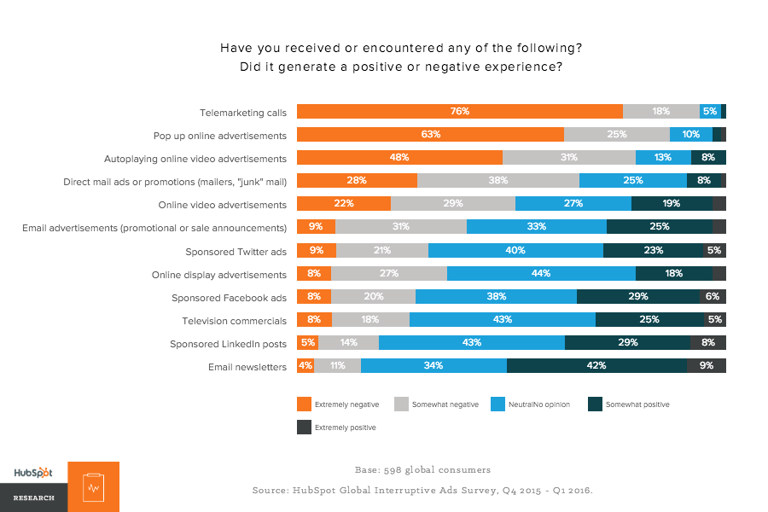Both Inbound and outbound marketing have one goal. Attracting prospect. However, it has been proven that inbound marketing is the number one solution for convincing your prospects of the benefits of doing business with you.
Yeah – that’s a bold statement, and you’re not quite sure if you believe it, are you?
That’s ok, you’re only human, and as a human being living in a world where complicated relationships, fake news, and unreliable weather forecasts are the norm, it’s hardly a wonder that many of us (perhaps even all of us) harbour a not-insignificant capacity for scepticism. But, just to warn you – we’re going to make some further bold statements about the advantages and benefits to be had from inbound marketing in this piece. However, like all good inbound marketing material, you can rest assured that this blog post will provide the proof to back them up…
Outbound marketing focuses on volume and the "law of averages". They hope to increase the likelihood of getting a sale by approaching every potential prospect.
Outbound marketing methods are summarised by the saying "throw at the wall and see what sticks". For those of you not familiarised with the term, some great outbound marketing examples would be sending direct mail or cold calling...
Still not convinced?
Once again, we understand. Day-to-day situations give fuel to the fires of scepticism all the time. Perhaps it’s a work deadline, a promise from the PM (Prime Minister, Project Manager, Private Message – take your pick), or celebrity chefs insisting that we really can knock up a delicious yet nutritious meal in just 15 minutes – the prospects of impossibility arise everywhere, and with them our doubts.

Scepticism, indeed, comes forth in reaction to the absence of factual confirmation. The natural remedy, therefore, is of course the timely delivery of education, information and irrefutable proof that whatever it is that is being suggested will faithfully manifest.
Enter Inbound Marketing
Businesses sell solutions to problems. Whether you’re peddling a product that pledges to do X, Y and Z faster, better or more affordably than anything else, or a service that will take the pains out of this, that or the other and deliver more favourable results – at the end of the day, the nature of being in business requires you to make a series of unproven promises to prospects that give rise to their natural tendencies towards scepticism.
The challenge, then, is to ensure that adequate proof is provided to all those that may question your assurances.
And here is where inbound marketing comes in. Inbound marketing focuses on providing you with valuable content to make your decision-making process as easy as possible in every stage of the sales funnel.
In many ways, the very practice of inbound marketing has risen to combat the phenomenon of mass consumer distrust.
Indeed, it is arguable that years and years of outbound marketing (i.e. pushy salespeople, cold calls, in-yer-face advertisements, etc.) has contributed to the culture of scepticism and, in turn, (bold statement alert!) the present effectiveness of inbound marketing tactics that we see today.
Outbound marketing strategies will likely bring you the lowest ROI among most types of marketing. These days, people often don't like advertisements and other outbound marketing tactics interrupting their busy lives with information that nine times out of ten holds no interest for them. In fact, they've become pretty good at avoiding such things.

96% of online consumers have unsubscribed from marketing emails, according to research from HubSpot, with 81% declaring that they have abandoned a website due to its use of pop-ups or auto-play videos. Further research from eMarketer has also revealed that 70% of internet users employ online ad-blockers in 2016 – a figure that is expected to rise to 87% in 2017.

By contrast, consumers neither have the inclination nor the means to block inbound marketing material for the very simple reason that it is the consumer him/herself that actively searches for the content.
Indeed, it is within your inbound marketing material that you will provide the all-important proof that your product, service or solution delivers the results that you claim it will, thusly eradicating the scepticism that the pushy outbound stuff engenders.
And here’s another bold statement to titillate your cynicism – not only does inbound marketing provide the perfect means of answering your prospects’ questions when they ask them, but inbound marketing also costs less and generates more leads than outbound marketing.
Where’s the proof, you say?
Well, dear sceptic – research from Mashable tells us that 3 out of 4 inbound marketing channels cost less than any outbound marketing channel, and HubSpot figures reveal that inbound leads cost 61% less on average than outbound leads.

More?
No problem – a Kapost study found that inbound marketing yields 3 times more leads per dollar than traditional methods, Eloqua found that the average cost per lead drops 80% after 5 months of consistent inbound marketing, and HubSpot (again, we know – they’re pretty hot on this stuff (which is why we partner with them)) confirms that inbound marketing can result in doubling the average website conversion rate from 6% to 12%.
How to Use Inbound Marketing to Educate the Sceptics
You're beginning to come around to the prospect of inbound marketing and have an understanding of why your outbound marketing efforts may not have worked as you expected – we can feel it.
And for good reason, for we have taken the time here to illustrate through example some of the key tactics that inbound marketing utilises to educate any sceptics there might be to the inbound marketing solution.
Quote Key Facts from Reliable Sources
In order to turn a sceptic into a believer, you will need to provide proof of the concept you are trying to sell.
Sceptics need facts. And if you’re still sceptical about the benefits that inbound marketing will bring to your business, consider this – Impulse Creative (reliable source (see above and below for more)) has found that companies that blog just once a month generate 70% more leads (fact).
Whatever it is you’re trying to sell, the use of inbound marketing tactics (such as blogs, webinars, whitepapers and case studies to name but a few) will provide you with ample opportunity to tap into some wider industry research that will help alleviate any concerns that your prospects may have.
Build Case Studies Highlighting Your Clients’ Successes
The more, well, sceptical amongst you may still feel that reeling off a few stats from a few third-party experts may not be enough to convince and convert your equally weary brethren.
You may be right – which is why inbound marketing doesn’t stop there.
Case studies form one inbound marketing tactic that will satisfy doubts about your claims in no uncertain terms. If your product, solution or service really is as good as you say it is, then those prospects inspecting your website will want to see some proof of that.
Case studies will provide that proof (and for proof of ours, please see here).
A good case study will tell the story of one your client’s successes from start to finish. It will highlight where they were to begin with, what goals they were trying to achieve with your solution, and how you managed to work with them to accomplish those targets.
It will include real data in an easy-to-read format that shows the figures going up and up, and it will spotlight the specific strategy you used to achieve this feat.
Finally, your case study will suggest how your product or service may be used in other areas to realise similar results for other businesses.
In short, a well-conceived and executed case study will show your prospects that you can bring them success, and also, by implication, that your existing clients are so satisfied with your service that they have been willing to participate in your study to drive more business your way.
Testimonials
Let’s not forget the power of the testimonial. And what power indeed. Of all types of content marketing, customer testimonials have the highest effectiveness rating, coming in at a cool 89%, according to the reliable source that is Social Media Today.

Whether your business goes for the hard-sell or not, its very existence implies that you want people to buy something – and centuries of outbound marketing has conditioned consumers to be on their guard.
Testimonials provide the social proof that combats such scepticism. Indeed, displaying all the good things that your existing customers are saying about your brand creates an emotional appeal to new ones.
And here’s some more research to back up another bold statement – the Journal of Marketing Research conducted a study which found that brands that inspire a higher emotional intensity receive 3 times as much word-of-mouth as less emotionally-connected brands. The same academic study also found that highly differentiated brands earn more positive word-of-mouth.
In short, testimonials serve to educate your naturally sceptical prospects on the joys and benefits to be had through doing business with you. And that’s priceless.
eBooks and Whitepapers
Written content is a staple of all inbound marketing efforts. And the reason, of course, is that well-researched pieces of writing provide the basis for all good education.
Whitepapers form an exceptionally important element in this regard. Here is where you will thoroughly deliver in highly-detailed terms the value proposition of your service or product.
Whitepapers can and perhaps should be thought of as your company’s manifesto. You will use them to explain what you do, why you do it, how it works, and the reasons that your prospects will benefit.
Your whitepapers will aim to provide as many answers as possible to questions that you predict your prospects will have. In other words, they will educate your customers about your solution – and an educated customer is a ready-to-buy one.
By contrast eBooks are typically not quite so introspective, though are nonetheless designed for educational purposes. eBooks will often take into account your industry in its wider context, and deliver valuable insight and research as to the state of things as they are, and potential of things yet to come.
eBooks, indeed, provide the perfect format to position your business as an expert in your field. With them, you can provide free (well, you might request an email address in return, but no matter) education about your sector, which in turn will further educate your readers that you indeed know what you’re talking about. And that inspires trust and instils credibility – two things that inbound marketing works hard to impress on your audience.
Back to You
Well, we've certainly convinced ourselves about the powers of using inbound marketing and the importance of a good marketing strategy to educate the sceptics. How about you?
Inspiring consumer trust in the businesses we work with is our very raison d'être. But, as a sceptic, you won’t, of course, be willing to just take our word for it – so please check out our Inbound Marketing Results page for all the case studies, testimonials and social proof you need.







